Sometimes it takes a while to recognize an important artist. In the case of French photographer Charles Marville, the wait has lasted two-hundred years.
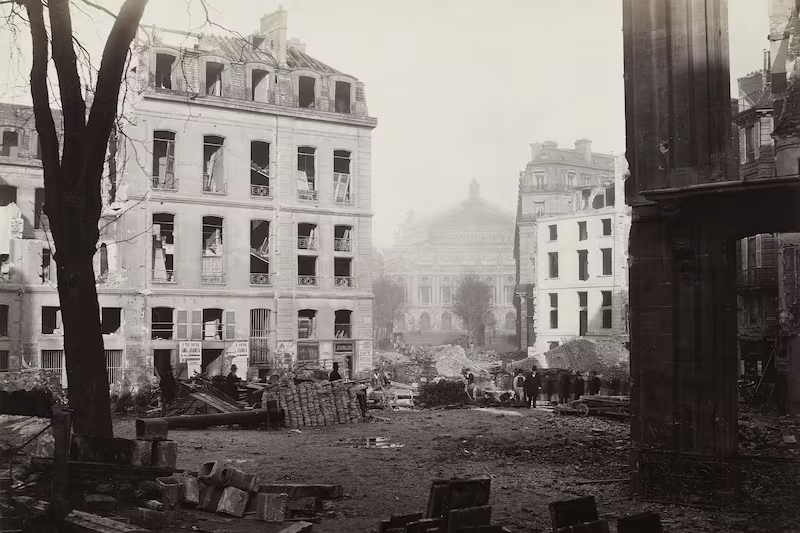
On the bicentennial of his birth, Marville and his work are featured in a fantastic new exhibition at the National Gallery of Art in Washington, D.C., titled “Charles Marville: Photographer of Paris.”
Over a hundred years before sections of news sites and Flickr pages devoted to “ruin porn” sprang up, Charles Marville set out to document a Paris that had been subjected to an incredible amount of destruction, and would undergo its most dramatic changes yet under city-planner Baron Haussmann.
The new exhibition, curated by Sarah Kennel, starts with Marville’s early work, when he was just beginning his artistic career (and shedding his birth name Bossu, which means “hunchback” in French) in 1850 and continues through his time documenting the restoration of monuments and the reorganization of Paris that started during the Second Empire. Marville and his camera played permanent witness as Paris shifted from a dirty, cluttered city characterized by medieval haphazardness into the city of magnificent boulevards and elegant urban parks.
Crowds filled the rooms at the National Gallery, as tourists and denizens of the capital came to see Paris before it was, well, Paris. While photos of Paris may fill news feeds on Facebook (inducing either eye rolls or gasps of envy), few capture the city that is so full of both promise and paradox (as was eloquently laid out by the New York Times’s outgoing Paris bureau chief ). Marville’s photographs depict the same well-known vistas and vantage points, only of a somewhat unrecognizable city. In his photos of the famous bridges traversing the Seine (a popular motif in travel illustrations), the banks look jarringly different—industrial and unkempt. A view looking beyond the spires of Notre Dame reveals the urban chaos about to be demolished.
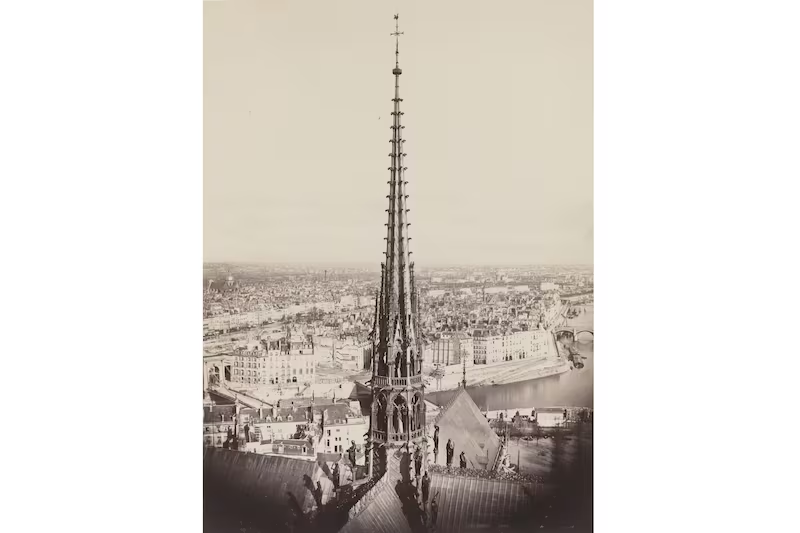
Marville became most famous, of course, for his work as the official chronicler of the “Haussmannization” of Paris. Under Emperor Napoleon III, Paris underwent a series of modernizing changes that saw entire neighborhoods torn down and transformed into wide boulevards radiating from important public spaces like the Opera. While Marville did not campaign for any particular point of view, his photographs speak volumes. His Ruins of City Hall, from the album Hôtel de Ville de Paris, 1871, conveys the damage seen in the aftermath of the Paris Commune. In Percement de l'avenue de l'Opéra: Butte des Moulins (Construction of the avenue de l'Opéra: Butte des Moulins), December 1876, Marville pulls no punches documenting the amount of destruction that went into constructing Haussmann’s vision. To create the Avenue de l’Opéra, an entire hill was leveled, and its working class population removed.
But his portrayal of the disappearing Paris is also unflinching. Much of the communities swallowed by the expansion of the city and the construction of the Bois de Boulogne are squalid. As are the photographs of the Bièvre River, which was a heavily polluted tributary of the Seine filled with chemical waste from dye shops, laundries, leather works, and other industrial pursuits.
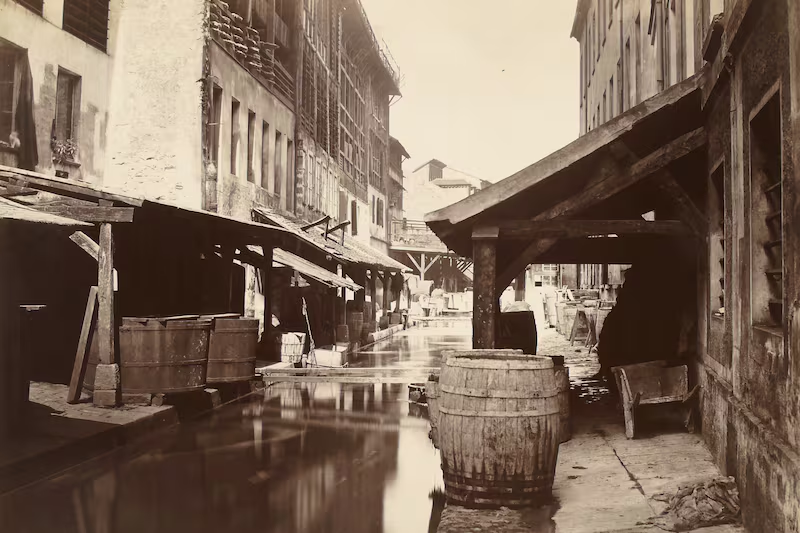
While many may not think of Paris today as exceptionally clean (to put it mildly), in the eyes of Haussmann and his team, the Paris leading up to the 1800’s was exceptionally filthy, and a large part of their reformation was based on the effort to clean it up.
Some of the exhibition’s more crowd-pleasing images of the city document these new changes. While there is only one vespasienne, or public urinal, left in Paris today (somebody might want to reconsider that policy), many were installed during Haussmann’s reign, and were intricately designed and selected by architect Gabriel Davioud and his team. For the gas lamps alone, Marville did a series on 90 of the different models used. These public improvements, among others, turned Paris into the most modern city in the world, just in time for the 1878 Exposition Universelle.
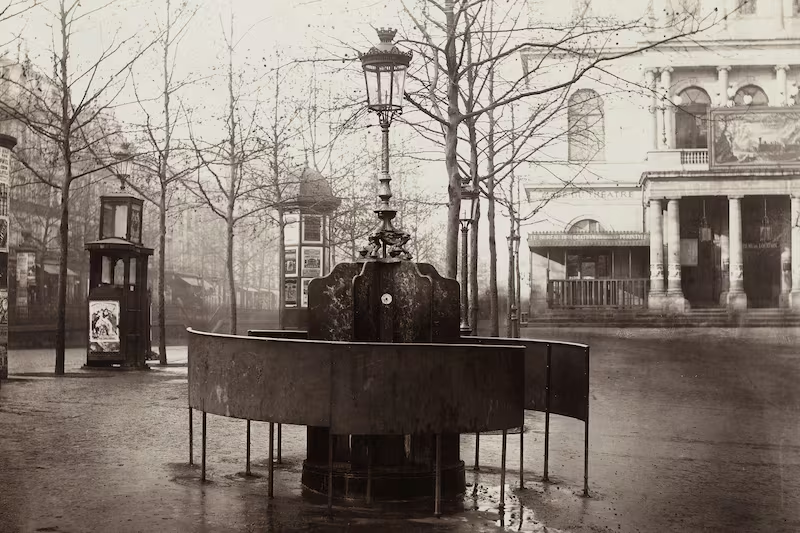
But Marville’s real specialty was what we today might call “ruin porn.” He maintained friendships with prominent architects, like Eugène Viollet-le-Duc, and was commissioned to document many of the buildings they were about to replace or repair, like the Château de Saint-Germain-en-Laye, which he captured in its dilapidated state before restoration in 1862. Beginning in the early 1860’s, he took over 425 photographs of the deteriorating buildings throughout Paris.
The photo “Industry” by Louis Petitot, Pont du Carrousel, Paris, 1852, captures the young artist utilizing irony to epitomize the contradiction between the city’s imperial ambitions and its struggling lower classes. In the photo, the ostentatious monument is undercut (literally) by a temporary stall selling wares in its niche. No matter how many grand statues, wide boulevards, and opera houses are introduced, the photo seems to say, the working class will remain the heartbeat of the city.
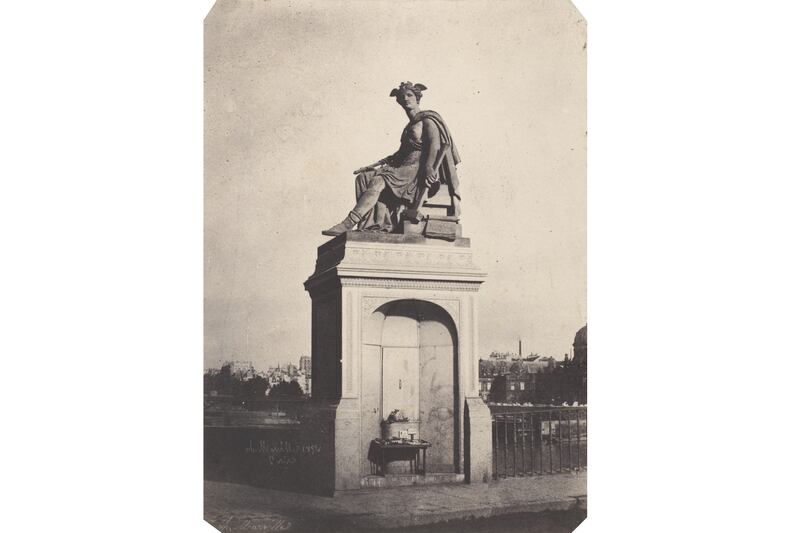
Even though he documented the early 1800’s, Marville’s photographs are still relevant today. His images are redolent of current battles going on in cities like Washington, D.C., New York, Baltimore, and Detroit—as well as Paris, London, and Mexico City. During his time working to capture Paris, it became a different city entirely, discarding parts of its identity into the trash heaps of history. The city that emerged is one of the most beautiful in the world (as centuries of tourists will attest), but the exhibition forces visitors to contemplate the important question that is rarely asked when it comes to modernization: what price will we pay for beauty?
The exhibition is at the National Gallery of Art in Washington, DC and runs until January 5, 2014. Admission is free.





